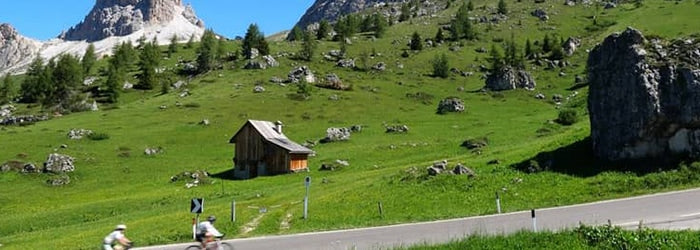1. Countdown from 21 to 0 hairpin turns
From the start in Bourg d'Oisans, the mountain has 21 hairpin turns to the finish. It may sound silly, but counting down provides extra motivation. That's because instead of worrying about altimeters or wattages, you can focus on the number of turns you still have to do. It is simply counting down from 21 to 0. That makes the climb just a little more bearable.
2. Don't go too crazy in the beginning
The Alpe d'Huez is a relatively short but tricky climb. The first few kilometers are the steepest and therefore immediately set the tone for the rest of your climb. If you lose yourself halfway, it's going to be very tough all the way to the top. The first 5 turns, with an average gradient of 10.5%, are the real calf bites. The climb is 13.2 kilometers long and the top of Alpe d'Huez is at 1860 meters, so don't get off too overconfident at the start!
3. Good resistance is half the battle (or more)
Nothing is more important than keeping your legs grinding nicely. That means that you're not going to stumble. The right gear is therefore indispensable. Especially if you do the climb up to six times during the Alpe d'HuZes.
A triple (a crankset with three chainrings) is normally a bit of a no-go among cyclists anyway, but for a tough climb quite suitable. The motto of the Alpe d'HuZes is ""giving up is not an option,"" so don't be ashamed if you have this mounted on your bike. If it means you can climb more comfortably and without pain, it's worthwhile.
You can also mount a different gear on your bike. For example, by replacing the cassette on the rear wheel with one with more teeth, you will make things a lot easier for yourself. Most cyclists choose an 11/32 or 11/34 cassette when cycling in the high mountains. Note: if you mount a larger size cassette, you usually need a different derailleur. You can do this yourself with a ""cassette removal kit"" or drop by the cycling specialist.
4. Train!
Yes, we live in a flat country, yet we also produce good cyclists and climbers. In fact, we are among the world's best. There is no reason why you can't properly prepare for a climb on our Dutch polder roads. Find that viaduct and shift up a gear against the wind.
5. Nutrition is KEY
The right nutrition is essential when doing multiple climbs. This is because your muscles only store a limited amount of glycogen in them, which will last about 90 minutes. Start replenishing this ""energy supply"" in time. A good rule of thumb is to ingest about 60 grams of sugar per hour. That's 3 bananas. After all, your body cannot absorb or process much more than that. Also eat enough beforehand, a plate of pasta two hours before your climb is recommended. With a First Energy Gum you'll keep your energy levels up as you start, so you can resist the challenges to come.
6. Motivation
For Alpe d'Huzes participants, this is usually not a problem. A higher purpose like raising money for cancer research or mourning a loss is something above and beyond any sports performance. If the physical and mental pain during the climb knocks you down, keep that purpose in mind. It is the strongest doping. Keep courage and help each other, giving up is not an option!

